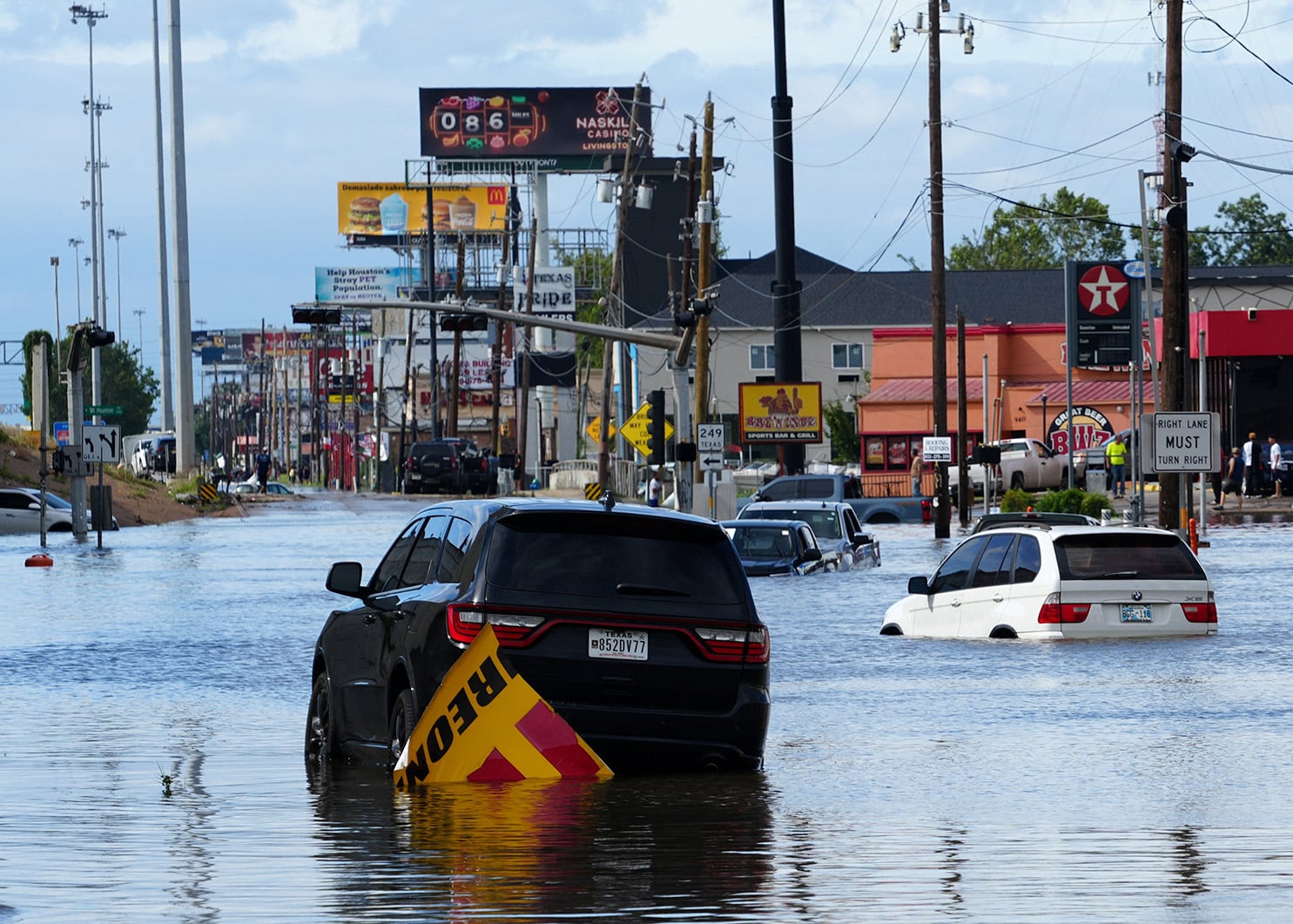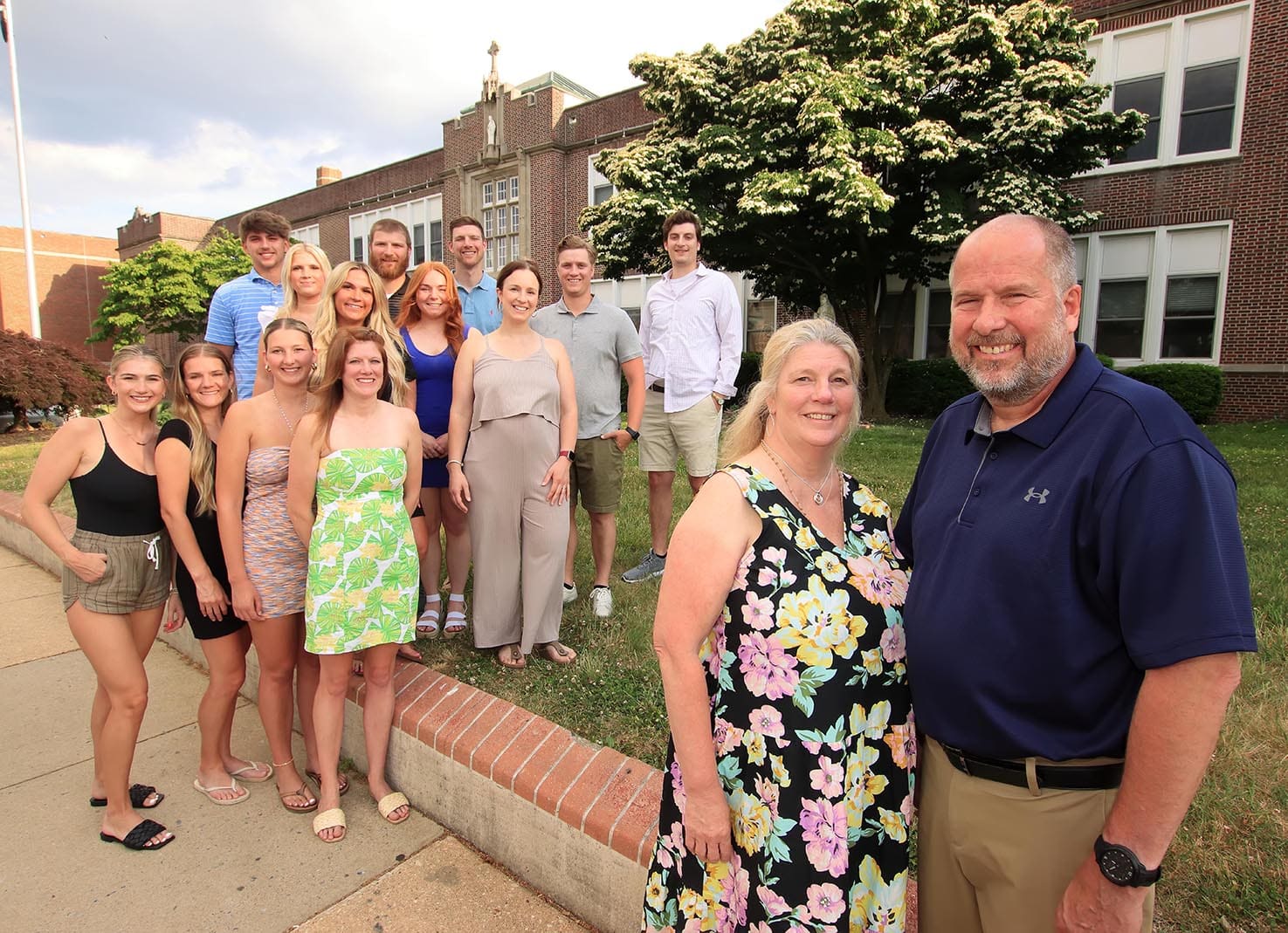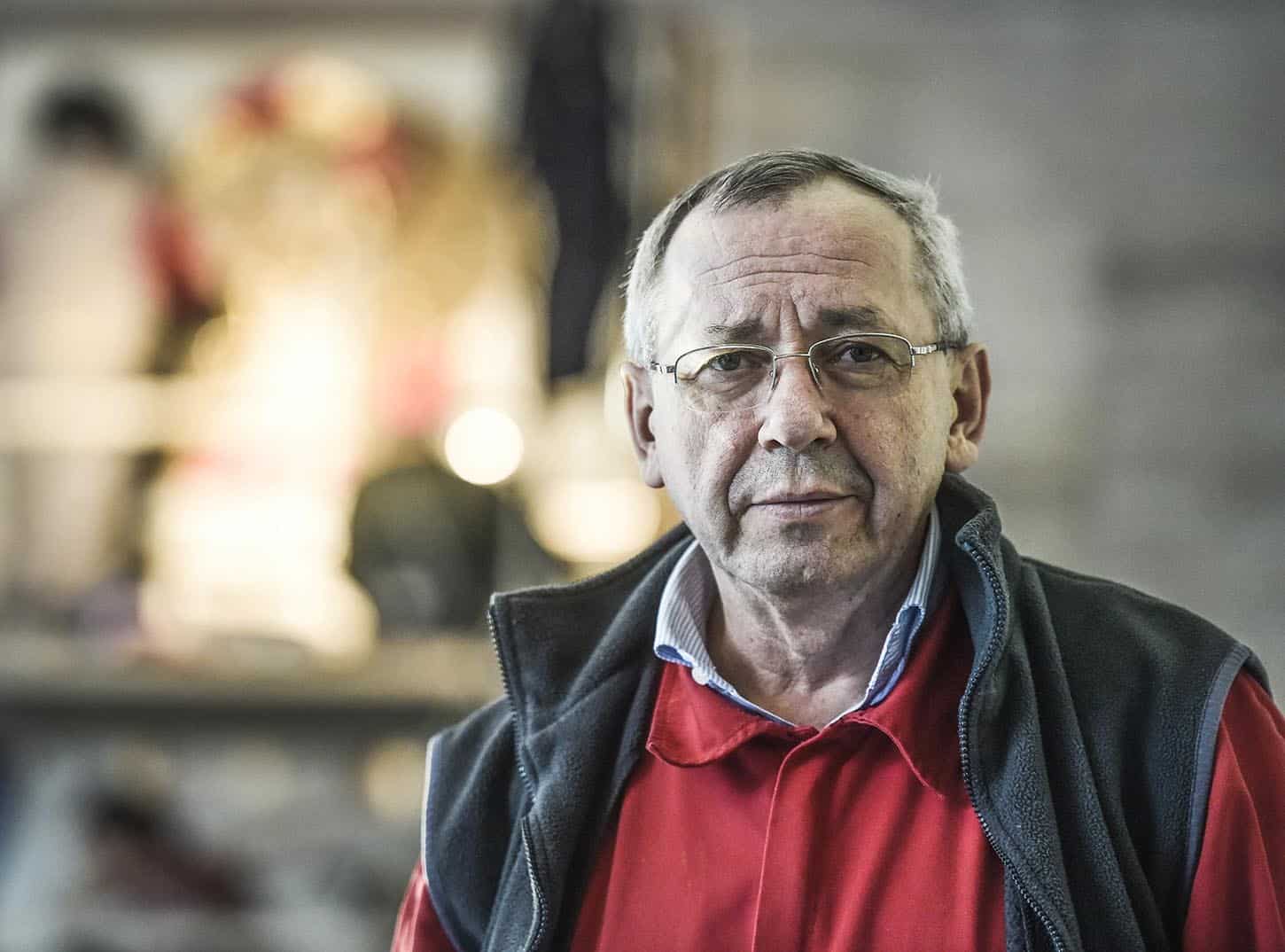(OSV News) — Marina Frattaroli describes herself as the National Eucharistic Revival‘s “first convert,” after a related social media post led her to a website describing the church’s teaching on Jesus’ true presence in the Eucharist.
Now she’s spending most of her waking hours with the Eucharist as one of the National Eucharistic Pilgrimage’s 30 perpetual pilgrims, who set out from points in California, Connecticut, Texas and Minnesota to meet at the National Eucharistic Congress in Indianapolis July 17-21.
“The last six weeks have been like the greatest introduction to the depth of the Catholic Church for anyone, ever,” said Frattaroli, a 26-year-old pilgrim on the eastern St. Elizabeth Ann Seton Route. “I have just seen so many people, so many churches, so many liturgies, so many bishops, so many faithful — just all in the most packed amount of time possible, and on a very deep level. … I feel like God is rolling out the red carpet.”
Daily life on the pilgrimage
Since May 18, she and other members of the pilgrimage’s eastern “Eucharistic caravan” have traveled with the Eucharist — participating daily in Mass, adoration and processions — through Connecticut, New York, New Jersey, Pennsylvania, Maryland, the District of Columbia, West Virginia and Ohio. On July 8, the group entered Indiana, where they will continue westward, arriving in suburban Indianapolis July 14.
For a new Catholic, the unprecedented pilgrimage has included “so many overwhelming aspects” as she continues to learn about and experience the faith, Frattaroli said.
“I’ve been in more adoration during this pilgrimage than in my whole life combined before,” she said. “Pretty early in the journey, I totally had to rewire my notion of what it was to pray in front of the Eucharist. … It went from ‘I want to delve into this mystery’ … (to) what I need is just to rest — to rest with God, to trust him more deeply.”
A personal spiritual journey
Frattaroli will have covered nearly 1,000 miles when she arrives in Indiana’s capital. Her physical journey, however, is a continuation of a winding spiritual journey to the Catholic Church.
Frattaroli grew up in Dallas, the youngest of three sisters in a devout Presbyterian family. She was active in her church and loved learning. Catholicism was hardly on her radar, although her family attended Mass with her Catholic paternal grandfather when visiting him in South Carolina. She recalls “transubstantiation” — the substantial change of the bread and wine into Christ’s body and blood during the Mass — being an answer to a sixth grade test question about the reasons for the Protestant Reformation, but she gave it little thought beyond that.
She was, however, interested in theology and Christian history, and she pursued art history and religious studies at Duke University in Durham, North Carolina.
Finding Catholicism on social media
“I was first introduced to Catholic things in undergrad classes, even though I didn’t recognize it as such,” she said. She was especially enthralled by Gothic churches but thought of them as examples of “medieval Christianity,” not sacred spaces created for Catholic liturgy.
In the final semester of her senior year, she took a course on early church history. She expected to recognize her experience of Christianity in what she read, but instead, she said, ancient Christianity felt foreign and uncomfortable. She was surprised by the early Church Fathers’ attention to the Blessed Virgin Mary, virgin martyrs and references to eating Christ’s flesh.
Amid graduation preparations, Frattaroli finished the class with “a sense of uneasiness,” she said.
Meanwhile, she had been confronted at Duke by Christians promoting competing views of morality, especially around sexuality. She wanted answers, so she decided to carefully read the entire Bible, hoping that approaching it with the same intensity she gave to poetry would bring clarity.
She pursued that project over time, pausing for a while after graduation. However, when the COVID-19 pandemic began, she dove back in.
Isolated with her family in Dallas and “spending way too much time on the internet,” she also stumbled into the world of “Catholic Twitter” — conversations among Catholics on the social media platform now known as “X” — that first led her to ponder the relationship between tradition, Scripture interpretation and church authority. She dove into what felt like a new Catholic landscape, and she began to connect her discoveries with what she had learned about early Christianity and loved about medieval churches.
Encountering the Eucharistic Revival
At some point, Frattaroli came across the words “Eucharistic revival.” Puzzled, she Googled the term. She said it led her to a website that explained the Catholic Church’s teaching on the Eucharist — likely connected to the National Eucharistic Revival, which the U.S. bishops had been discussing in the wake of a 2019 Pew Research Center survey showing one-third of U.S. Catholics agreed with the church that the Eucharist is the body and blood of Christ. The U.S. Conference of Catholic Bishops would formally move ahead with the National Eucharistic Revival initiative in November 2021, officially launching the three-year initiative — which includes the pilgrimage and congress — in 2022.
The church’s explanation of the Eucharist “was shocking to me,” Frattaroli said. “I was like, oh, OK, so the Eucharist is the transubstantiation concept I’ve heard of, but I’ve never seen it discussed in a devotional context.”
She quickly came to realize that the Eucharist is fundamental to Catholicism, and that brought clarity to her previous brushes with the faith. “I had a series of revelations where I was like, oh wow, that’s what the ancient Christians were talking about. That’s why the ancient Christians were accused of being cannibals — because they were saying they were eating the flesh of Jesus. That’s why the Gothic cathedrals are so amazing — not only because they’re beautiful houses of worship, but in fact, they … were houses being built for God on earth.”
Scriptural support for the Real Presence
Then Frattaroli’s Bible-reading project took her into the Gospels’ Last Supper narratives, which added Scriptural support for Catholicism’s belief in the Real Presence.
“It was kind of scary,” she admitted. “I’ve been a Christian who loves Jesus … and have had really intimate moments of God. It’s like, how could I have been missing this, if this is so true? Do I have to leave my church now? Am I going to go on this big journey that, if I had been asked, ‘Do you want to go on this journey?’ I probably would have said, ‘No’ — because I wasn’t looking for it.”
While there were aspects of Catholicism that Frattaroli knew nothing about, she became convinced of the church’s teaching on the Real Presence. So, while visiting her grandfather, she accompanied him to Mass. She watched him genuflect and recognized it as a gesture of reverence for the Eucharist. In seeing her grandfather’s worship with new eyes, she also realized Catholicism was part of her heritage.
In the fall of 2020, she moved to New York City to attend Columbia Law School. She sometimes went to Mass, but her inquiry into the Catholic faith was stifled by “the law school shuffle” — until a surprise encounter with St. Teresa of Avila’s spiritual autobiography shook her apathy, prompting her to connect with Columbia’s Catholic campus ministry.
Health setbacks and spiritual growth
The following spring, she decided to become Catholic.
A bad case of COVID-19 put her plans on hold. Lingering symptoms required her to take medical leave from law school and drop out of the Order of Christian Initiation of Adults. While she waited to rejoin OCIA, Father Roger Landry — a sought-after Catholic speaker and retreat master — was appointed to lead Columbia’s Catholic campus ministry.
A priest of the Diocese of Fall River, Massachusetts, Father Landry was deeply involved in the National Eucharistic Revival, first as a Eucharistic Preacher commissioned by the U.S. bishops to travel to parishes to speak about the Eucharist. He also helped move the National Eucharistic Pilgrimage from a concept to a reality and volunteered to travel the full Seton Route.
Becoming Catholic
At Columbia, he welcomed Frattaroli into OCIA, and she entered the church in December 2022. “He just provided the most wonderful, in-depth and challenging Catholic catechesis you can basically get,” she said.
Father Landry also helped her reconcile questions about morality that had dogged her since Duke and more deeply understand the Eucharist. When she received her first Communion, “it just ended up being one of the most joyful days of my life,” she said.
Frattaroli had been Catholic for fewer than 10 months when the National Eucharistic Revival opened the application process for the pilgrimage’s perpetual pilgrims. Organizers noted they were seeking young adults aged 19-29 who were baptized, actively practicing Catholics in good physical condition, capable of walking long distances, and committed to upholding Catholic teaching. She was surprised to be selected, but noted that Father Landry’s recommendation likely gave her a boost.
She is grateful for Father Landry’s ongoing spiritual guidance during the pilgrimage, which began just a few days after her law school graduation. While she acknowledges she still has much to learn about the faith, she hopes to remain “docile to the hands of God.”
Life-changing event
“This has been a life-changing event for me,” she said, noting that “a different chapter” in her spiritual journey will begin after the National Eucharistic Congress, when she returns to New York to work at a law firm.
The time with Jesus in the Eucharist she has spent as a pilgrim has meant “living in the mystery” of his presence.
“The Eucharist is a beautiful, mind-blowing mystery,” she said. “I’m a thinker, and it just blows your mind when you try to think concretely about it. This thing that looks like bread is God. Jesus is here in this van with me. Jesus is feeding me with his own flesh — elemental things, but mind-breaking things.”
“All you can do is rest in his presence,” she added. “The mysteries are too great to fathom, and the gift of his presence is too good to pass up on.”







